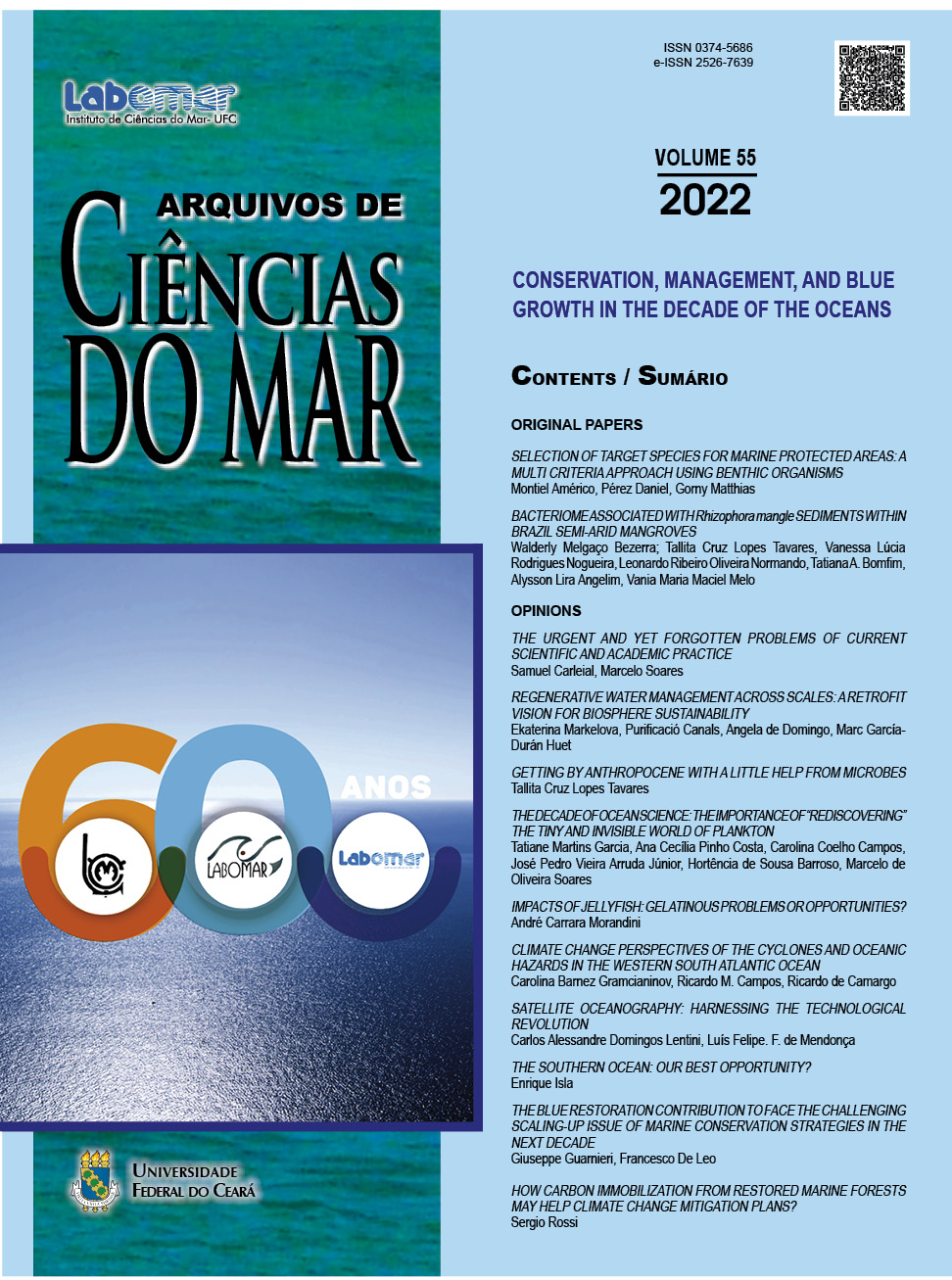LITERATURE REVIEW OF CORAL REEF RESTORATION IN AND AROUND THE CORAL TRIANGLE FROM THE VIEWPOINT OF MARINE BIODIVERSITY
Revisão da literatura sobre a restauração de recifes de coral dentro e ao redor do Triângulo de Coral do ponto de vista da biodiversidade marinha
DOI:
https://doi.org/10.32360/acmar.v55iEspecial.78183Abstract
The coral reefs of the Coral Triangle and nearby marine regions are the most biodiverse marine ecosystems in the world, providing ecosystem services to hundreds of millions of people. However, like coral reefs in other regions, these ecosystems are in decline due to a myriad of anthropogenically-induced stressors. To mitigate this decline, active coral reef restoration efforts have been increasing worldwide, including in this region. An important end-goal of coral reef restoration is the conservation of functional biodiversity of not only zooxanthellate scleractinian corals, but of all associated coral reef organisms. In this literature review, we collected papers from the Web of Science (1995-2021) focused specifically on coral reef restoration from six countries and regions around the Coral Triangle (Japan, Taiwan, mainland China, Philippines, Malaysia, Indonesia) to examine how much coral reef restoration research has been performed in each area, when it was performed, what methodologies were used, what organisms were targeted, and whether any assessment of biodiversity was included. Our results show great disparity in the research efforts of each area, with the Philippines clearly leading research in the region with almost half of the literature examined, followed by Japan and Indonesia, with nascent efforts in mainland China, Taiwan, and Malaysia. Overall, for the region, research appears to be increasing with time. Research in most areas was concentrated in one or two locations, and almost exclusively focused only on corals. Only approximately 38% of papers mentioned biodiversity in any manner, and only 14% included organisms other than scleractinian corals in their results. It is clear from this review that extensive research and data gaps exist regarding coral reef restoration in the western Pacific and Coral Triangle, particularly from the viewpoint of biodiversity. It is hoped that research can address these gaps before coral reef ecosystems in the region decline even further.
Keywords: coral reef ecosystems, knowledge gaps, East Asia, South-East Asia, Indo-Pacific.
Downloads
Published
Issue
Section
License
1. Proposta de Política para Periódicos de Acesso Livre
Autores que publicam nesta revista concordam com os seguintes termos:
- Autores mantém os direitos autorais e concedem à revista o direito de primeira publicação, com o trabalho simultaneamente licenciado sob a Licença Creative Commons Attribution que permite o compartilhamento do trabalho com reconhecimento da autoria e publicação inicial nesta revista.
- Autores têm autorização para assumir contratos adicionais separadamente, para distribuição não-exclusiva da versão do trabalho publicada nesta revista (ex.: publicar em repositório institucional ou como capítulo de livro), com reconhecimento de autoria e publicação inicial nesta revista.
- Autores têm permissão e são estimulados a publicar e distribuir seu trabalho online (ex.: em repositórios institucionais ou na sua página pessoal) a qualquer ponto antes ou durante o processo editorial, já que isso pode gerar alterações produtivas, bem como aumentar o impacto e a citação do trabalho publicado (Veja O Efeito do Acesso Livre).

